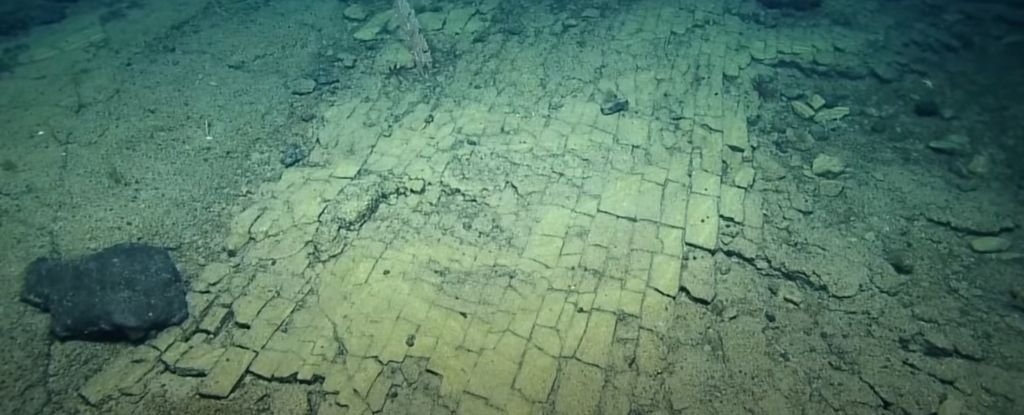By Christopher Monckton of Brenchley
By three votes to two, the UK Supreme Court (formerly the Judicial Committee of the House of Lords) ruled last week in a 100-page judgment that Surrey County Council, in granting planning consent to UK Oil and Gas plc for oil production at Horse Hill, Surrey, had neither requested nor considered in their assessment an estimate of the CO2 emissions from third parties combusting the 3.3 million barrels of oil that the Horse Hill field might produce over its lifetime.
The company says it will now “work closely with Surrey County Council promptly to rectify the situation, either via an amendment to the environmental-impact assessment” in the original zoning application or “via a new retrospective application”.
The Horse Hill drilling site, 3 miles from Gatwick Airport, Surrey, AI simulation
Here, in full, are the “facts” as set out in the Supreme Court’s judgment:
“Anyone interested in the future of our planet is aware by now of the impact on its climate of burning fossil fuels – chiefly oil, coal and gas. When fossil fuels are burned, they release carbon dioxide and other greenhouse gases – so called because they act like a greenhouse in the earth’s atmosphere, trapping the sun’s heat and causing global surface temperatures to rise. According to the United Nations Environment Programme (“UNEP”) Production Gap Report 2023, p 3, close to 90% of global carbon dioxide emissions stem from burning fossil fuels.
“The whole purpose of extracting fossil fuels is to make hydrocarbons available for combustion. It can therefore be said with virtual certainty that, once oil has been extracted from the ground, the carbon contained within it will sooner or later be released into the atmosphere as carbon dioxide and so will contribute to global warming. This is true even if only the net increase in greenhouse gas emissions is considered. Leaving oil in the ground in one place does not result in a corresponding increase in production elsewhere: see UNEP’s 2019 Production Gap Report, p 50, which reported, based on studies using elasticities of supply and demand from the economics literature, that each barrel of oil left undeveloped in one region will lead to 0.2 to 0.6 barrels not consumed globally over the longer term. …
“All that is required is to identify from published sources a suitable conversion factor – which is the estimated amount of carbon dioxide emitted upon combustion of each tonne of oil produced. The total estimated quantity of oil to be produced is then multiplied by this conversion factor [3.22] to calculate the total combustion emissions … for each tonne of oil produced. Multiplying the total estimated output from the proposed project of 3.3 million tonnes of oil … by this factor give an estimated total of 10.6 million tonnes of CO2 emissions over the lifetime of the project.
“It is instructive to compare the amount of these emissions with the direct greenhouse-gas emissions at the well site over the lifetime of the project, … [which] was 140,958 tonnes of CO2. As well as providing this figure, the developer calculated the proportion which this figure would represent of the total UK carbon budget. Based on this calculation, the environmental statement described the effects of the proposed development on climate as ‘negligible’. Had the combustion emissions been included in the assessment, the figure for greenhouse-gas emissions attributable to the project would have been nearly two orders of magnitude greater and could not have been dismissed as ‘negligible’ in that way.”
In total, therefore, just one page out of 100 in the judgment was devoted to the mere facts. The reason is that, as usual, the corporations behind the project did not dare to argue against The Science. Instead, they tamely accepted the Party Line. As a direct result of their failure to get to grips either with the physics or even with the economics of global warming, they expensively lost the case.
The mischief of the judgment is that, while the 141,000 tonnes of CO2 emitted at the drill site over its lifetime was negligible, the 10.6 million tonnes of CO2 that would be emitted by third parties combusting the oil produced at the site could not be dismissed as negligible. The sole stated ground for this ludicrous proposition, on which the entire judgment hinges, was that 10.6 million tonnes of CO2 are 75 times 141,000 tonnes.
The “judgment” made no attempt to calculate how much global warming the 10.74 million tonnes of CO2 emitted by the Horse Hill project over its lifetime would cause. So let us do what no one else in this case (least of all the judges) has done – the math.
As always, we shall use mainstream, midrange data and methods. In doing so, we do not necessarily endorse either the data or the methods. We accept them ad argumentum – that is, for the sake of argument. This approach minimizes the scope for diverting the discussion away from the main point we shall demonstrate: 10.74 million tonnes of CO2, the sum of the direct and indirect project emissions, is indeed negligible on any reasonable definition.
We start with 10,740,000 tonnes of CO2 emitted either directly or indirectly by the project. But this value must be reduced right at the outset because, as the judgment says, if the oil at Horse Hill is not extracted some 40% of the unextracted oil will be extracted somewhere else. The saving by not proceeding with the project, the remaining 60%, is 6,444,000 tonnes.
The mass of the atmosphere is about 5.1 x 1015 tonnes (NASA 2022), and the current CO2 concentration as measured at Mauna Loa is 427 parts per million. Therefore, the total mass of CO2 in the air is 5.1 x 1015 x 427 / 106 = 2.178 trillion tonnes or thereby.
Thus, the reduction in CO2 concentration by not proceeding with the Horse Hill project is 6,444,000 x 427 / 2.178 trillion, or about 0.00126 ppmv. You can see where this is going.
The radiative forcing from a change in CO2 concentration is 5 ln(C / C0). Therefore, the forcing abated is 5 ln [(2.178 trillion – 6,444,000) / 2.178 trillion), or 0.0000148 W m–2.
To convert Watts per square meter to warming abated, multiply by the 1.68 K transient 21st-century warming by doubled CO2 (Nijsse 2020) and divide by the 3.93 W m–2 doubled-CO2 forcing to get the answer: 0.00000632 K, or less than one-150,000th of a degree.
But that is before allowing for the fact that the decadal rate of global warming in the third of a century since IPCC (1990) has been half of what was then (and still is) predicted. So make that less than one-300,000th of a degree, or just one-third of one percent of the 1/1000th of a degree that would be abated even if the UK actually attained net zero emissions by 2050 (which it will not).
One redeeming feature: the judgment does not ban the project. It merely requires Surrey County Council to take account of the third-party emissions from the oil produced over the project’s lifetime. All that UK Oil and Gas needs to do is to send the Council this article and the Council can amend and confirm its decision to allow the project to go ahead.
Even if that fails, another route is available. Some years ago, the UK “Supreme Court” was unwise enough to hold a widely-publicized climate-change propaganda event in Court 1, at which – of course – only the Party Line was presented, and in the most tendentious and childishly extreme terms.
The Supreme Court – now widely regarded as a joke – had, therefore, prejudged the climate question by demonstrating frank prejudice in favor of the official narrative. It is accordingly permanently debarred at administrative law from issuing any decisions whatsoever on questions involving climate change.
For the law of the United Kingdom recognizes only two principles of natural justice: first, that both sides of a question – such as the climate question – should be fairly heard (audiatur et altera pars), and secondly, that no judicial authority that has made a cause its own by expressing a public view upon it other than as part of a judgment in a particular case may sit in judgment upon that cause (nemo sit iudex in causa sua).
It is, therefore, open to UK Oil and Gas to lodge a straightforward application to the European Court of Human Rights in terms of Article 6 (“right to a fair trial”):
“In the determination of his civil rights and obligations … everyone is entitled to a fair and public hearing within a reasonable time by an independent and impartial tribunal established by law. …”
The corporation should at once lodge an appeal to the Human Rights Court on the ground that on the climate question the UK Supreme Court is not an “independent and impartial tribunal” and that, therefore, it has no standing to overturn the lower courts’ findings in the corporation’s favor.
The appeal could usefully cite the following instances of prejudice in the Supreme Court’s grossly inadequate and deficient presentation of the facts –
- “Anyone interested in the future of our planet is aware by now of the impact on its climate of burning fossil fuels.”
This is rank prejudice. It assumes without evidence that the impact of burning coal, oil and gas has been or may become net-harmful. So far, it is proving handsomely net-beneficial. CO2 fertilization has increased the total biomass of all trees and other green plants on Earth by 15-30% in recent decades; cereal-crop yields per acre have tripled in 60 years, partly thanks to more CO2 in the air, since CO2 is plant food; plants are now more resistant to drought, thanks to the reduction in the quantity of stomata on the undersides of the leaves through which CO2 is inhaled and water exhaled; consequently, famines worldwide are at record lows; and these and suchlike indirect benefits are as nothing when compared to the direct benefits given to the world by the static and locomotive power generated by coal, oil and gas – benefits altogether ignored in the judgment.
- Use of the term “fossil fuels”. This is propaganda jargon straight from the climate-extremist playbook. It has no place in a supposedly dispassionate judgment by an “independent and impartial” tribunal.
Lodging the appeal now would protect the corporation’s position. The appeal can be dropped if (or, rather, when) Surrey County Council includes the above simple calculations in its assessment of the corporation’s zoning application and confirms that drilling may go ahead. Let us hope that, just for once, a corporation will find the courage to stand up to the Blob.
- “… greenhouse gases – so called because they act like a greenhouse in the earth’s atmosphere, …”.
No, they don’t act like a greenhouse. When a molecule of CO2 in the air meets a photon of light in its absorption band, it emits heat directly, as though a tiny radiator had been turned on. It does this by quantum oscillation in the bending vibrational mode of CO2. This has nothing to do with how a greenhouse operates. “Greenhouse gas” is another propaganda term adopted without question and without qualification by a prejudiced judiciary.
- “… trapping the sun’s heat”.
No, radiatively-active gases do not trap the Sun’s heat. They do not act like a blanket. They act like radiators.
- “… causing global surface temperatures to rise.”
Here, as elsewhere, the judgment fails to ask the question that any genuinely independent and impartial tribunal would ask: namely, by how much does the anthropogenic increase in CO2 concentration increase global temperature? The Supreme Court did not even bother to ask that question: perhaps the chief evidence that its judgment is rooted in a prejudice as ill-informed as it is profound. The West cannot long survive negligent stupidity on this scale.
Related




















Discussion about this post